Houseplants not only enhance your home with beauty, they also help cleanse the air. There is a wide variety of toxic chemicals lurking in your home, and while you can take steps to minimize them, some are not easy to get rid of. Spider plants, peace lily plants and mothers-in-law-tongue plants are just a few of the best houseplants for purifying air in your home. In 1998 in a now famous joint study, NASA and the Associated Landscape Contractors of America (ALCA) found that houseplants can absorb harmful toxins in enclosed spaces with little air flow.
Seeking to solve this problem, a promising, economical solution to indoor air pollution was to take a look at nature’s life support system, plants. The initial testing was for the indoor purification of the air from the chemicals Benzene, Trichloroethylene (TCE) and Formaldehyde.
Benzene is a commonly used solvent in such items as gasoline, inks, oils, paint, plastic and rubber. Furthermore, it is used in the manufacture of detergents, pharmaceuticals and dyes.
Formaldehyde is found in virtually all indoor environments. Its major sources include urea-formaldehyde foam insulation, particle board, or pressed-wood products. Consumer paper products, including grocery bags, waxed paper, facial tissue and paper towels, are treated with urea-formaldehyde resins. Many household cleaning agents contain formaldehyde.
Trichloroethylene, TCE, is a commercial product that has a wide variety of industrial uses. It is used in some printing inks, paints, lacquers, varnishes and adhesives.
In the NASA/ALCA research it was determined that some plants are better than others for purifying the air indoors. It is estimated, as a result of this research, that 15 to 20 of these test houseplants can purify the interior of a typical house of 1,800 square feet. Or, 2 to 3 plants in 8-to 10-inch pots for every 100 square feet.
This study has been the basis for succeeding studies about indoor plants and air cleaning abilities. While plants are slower than air purifiers, they’re more natural, cost effective, and therapeutic. Plants are also known to increase mood and productivity, enhance concentration and memory, and reduce stress and fatigue.
The top fifteen plant types to purify the air of your indoor living spaces are the following:
1. Peace lilies, Spathiphyllum, are one of the best at absorbing chemical vapors like acetone, which is found in nail polish remover, and the alcohol in hair products and household cleaners. Eliminates formaldehyde, benzene, TCE, xylene, ammonia and more. Easy care that tells you when it needs a drink—the leaves droop. Water and it perks right up. Prefers low, indirect light, and can thrive under fluorescent lighting. Great for the bathroom.
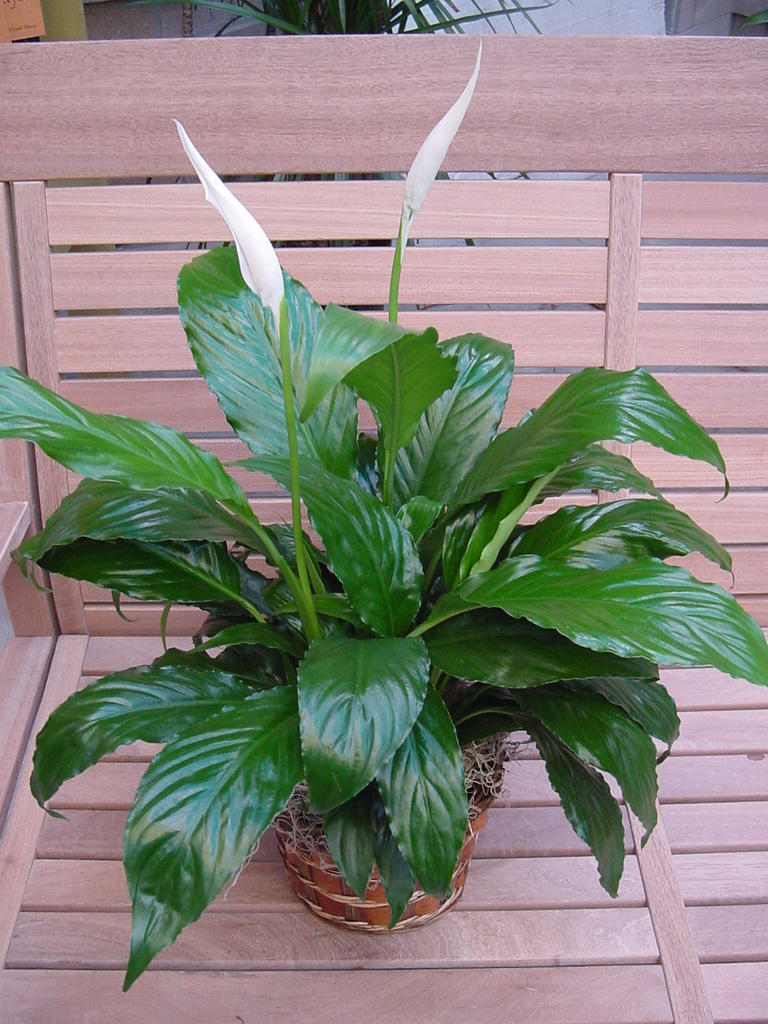
Spathiphyllum or Peace Lily
2. Rubber plants, Ficus elastica, relieve your allergies by drawing dust and allergens to their high humidity leaves where they stick instead of lingering in the air. Easy care. They need medium bright indirect light and moderate temperatures. Water when the soil is dry.
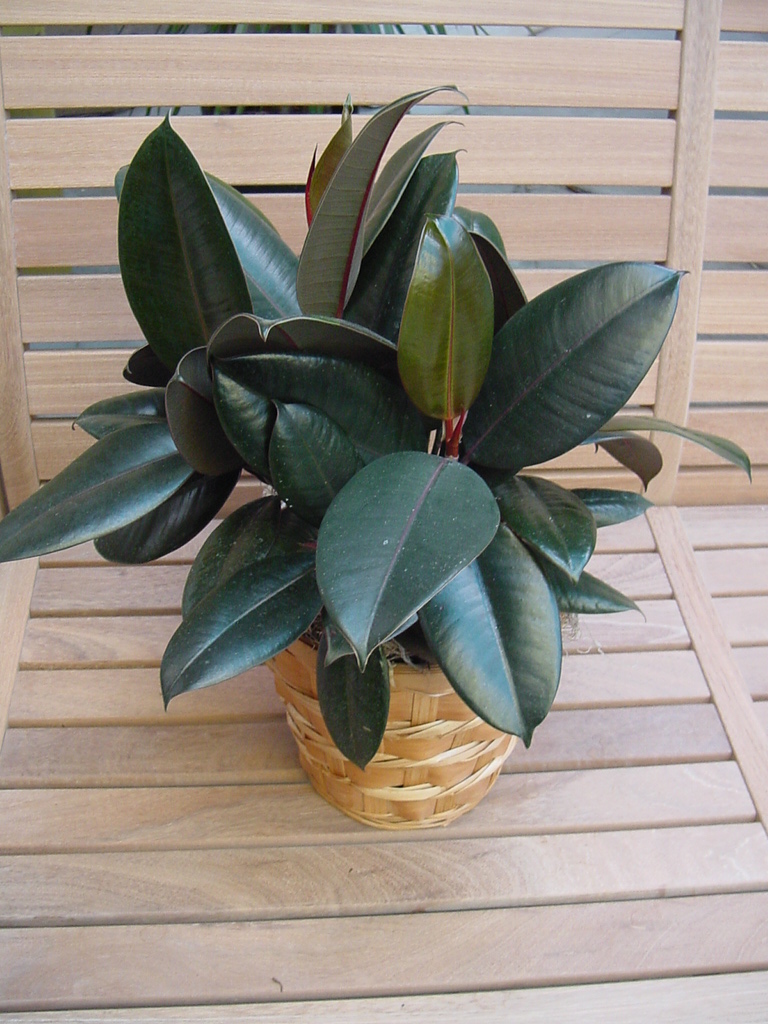
Ficus elastica or Rubber Plant
3. Golden pothos, Epipremnum aureum., are adept at absorbing benzene—found in plastics, furniture wax and tobacco smoke—which cause drowsiness and dizziness. They also eliminate xylene, toluene, benzene, carbon monoxide and more. Easy care. Let dry between waterings.
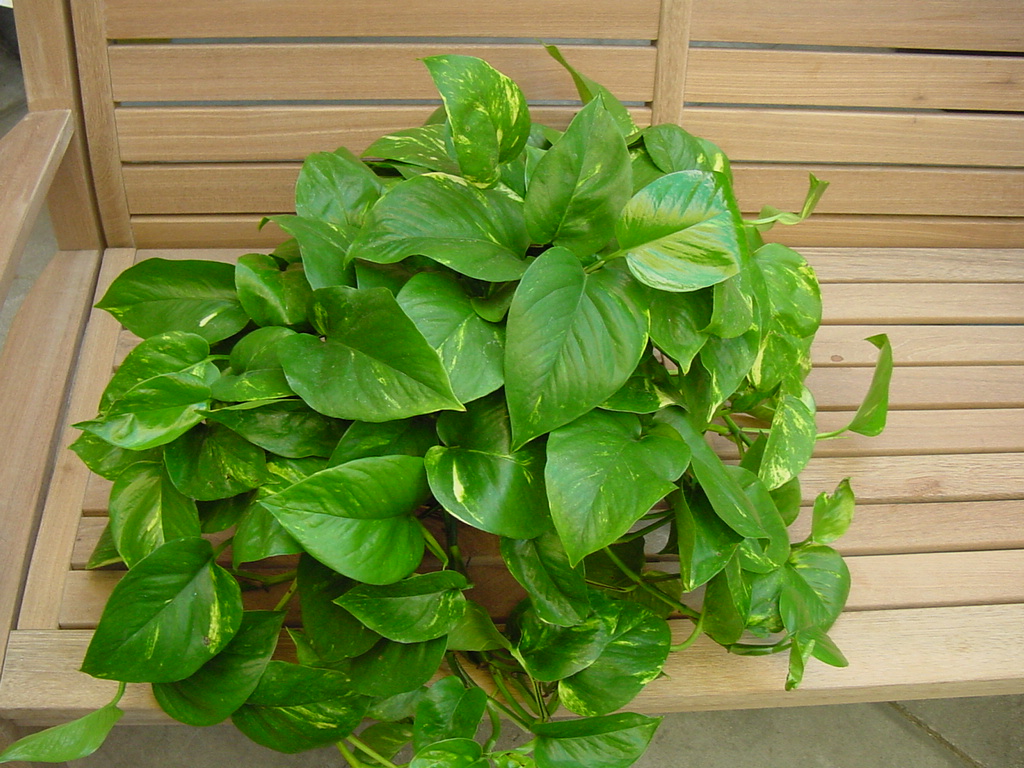
Epipremnum aureum or Golden Pothos
4. Snake plants, Sansevieria sp., commonly called mothers-in-law-tongue, work overnight to lower levels of carbon dioxide, keeping oxygen levels higher during the day. The result? Better air quality, which helps you think better and feel more productive!
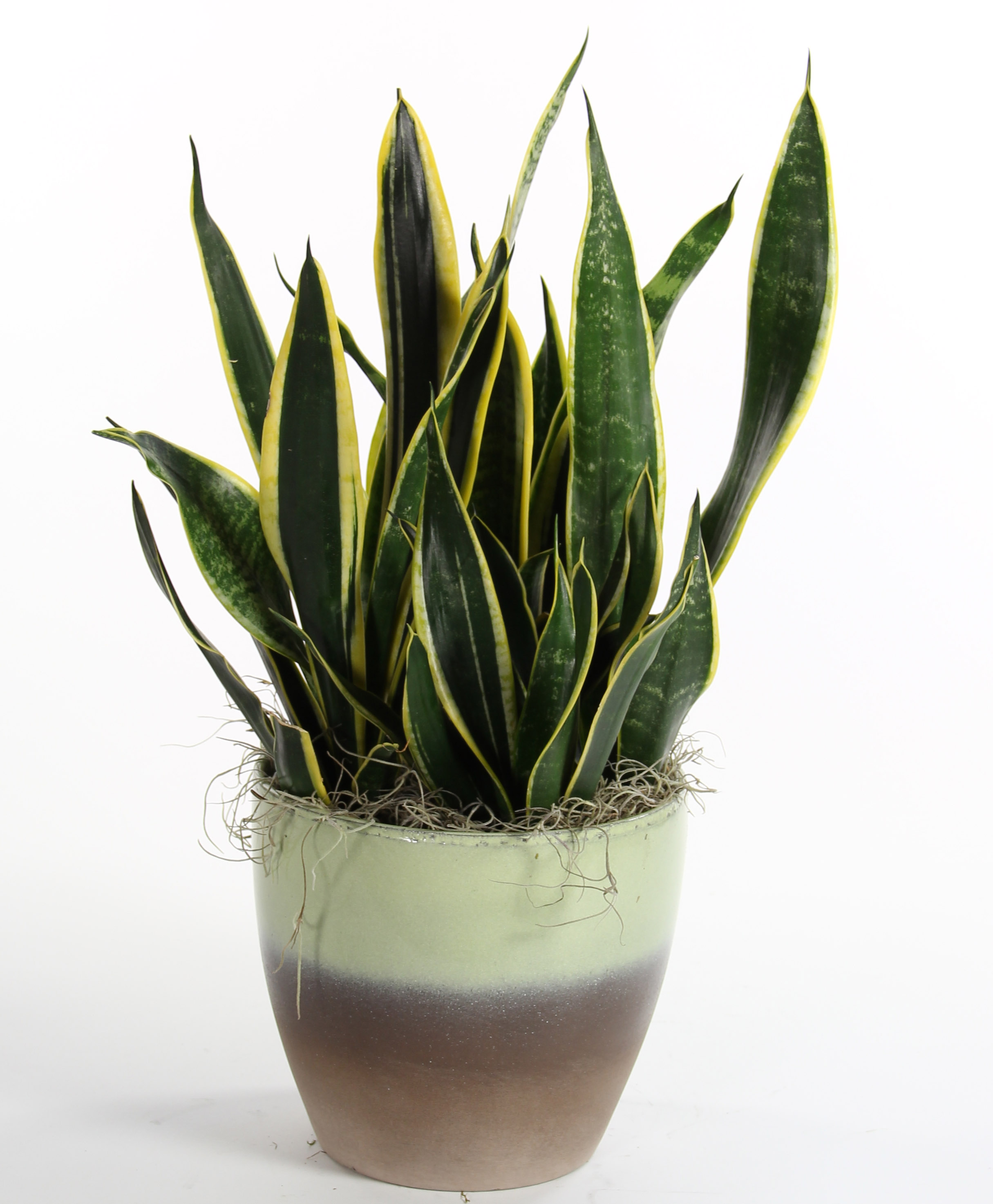
Sansevieria or snake plant or mother-in-law’s tongue
5. Orchids, Phalaenopsis and others, clear the air of headache producing cigarette smoke, paints, ammonia, dry-cleaning chemicals, plastics and cosmetics. Display a beautiful orchid to clear these from the air. Care is simple. They require medium light, cooler temperatures, and avoid overwatering.
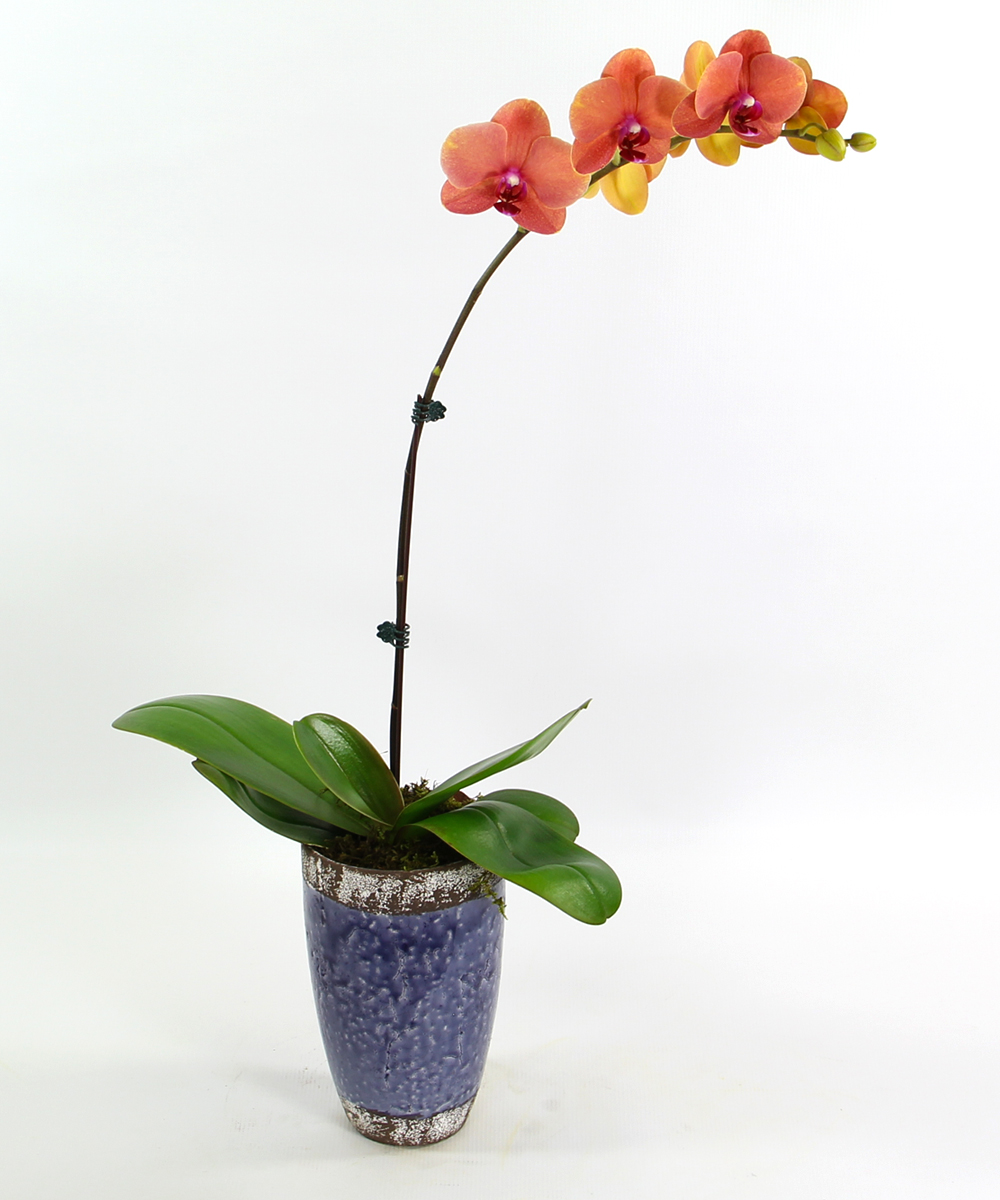
Phalaenopsis orchid
6. Dracaena plants, such as marginata and Janet Craig, gobble up odors and the toxin TCE found in paints, lacquers, varnishes and adhesives. Also excellent at removing xylene, toluene, benzene. Easy care. They require bright light but not direct sun. Water thoroughly and let the soil dry between waterings. Mist often or wipe the leaves with a damp cloth.
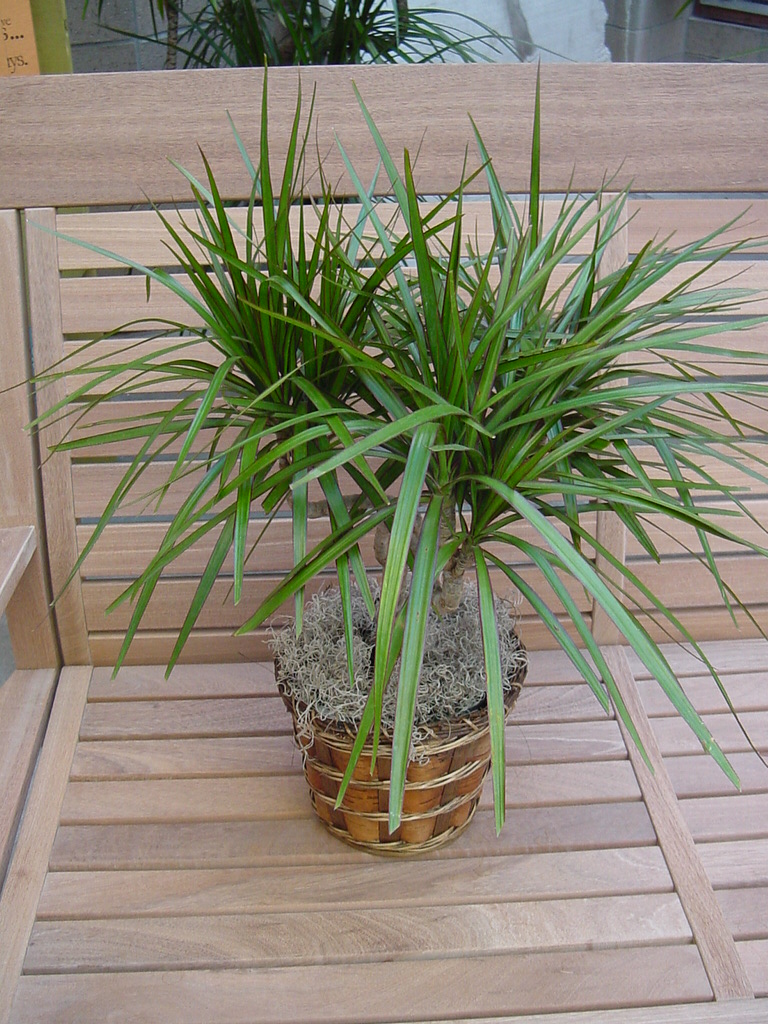
Dracaena plant
7. Bromeliads, many different species, are unlike most plants whereas they give off oxygen during the night instead of the day, helping you breathe easier overnight. They require a sunny spot and keep the center vase filled with water.
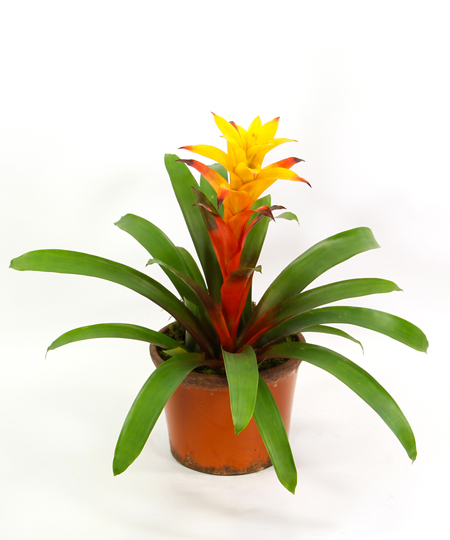
Bromeliad
8. Boston ferns, Nephrolepsis sp., remove more formaldehyde from the air than any other plant. A toxin found in furniture, clothes and carpeting, it can irritate the eyes, nose and throat, and trigger asthma symptoms. Ferns love light shade and plenty of moisture. They love a humid environment such as a bathroom.
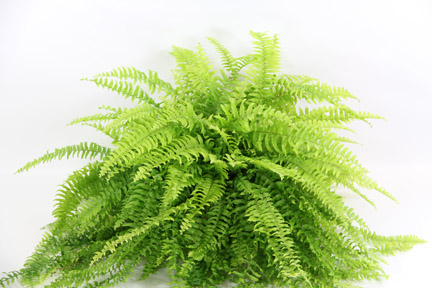
Nephrolepsis or Boston Fern
9. English ivy, Hedera helix var., banish mold. Researchers found that when the vines were brought into a room, 60% of airborne mold vanished! They also eliminate benzene, carbon monoxide, formaldehyde, TCE, and more. Ivy is shade-and cold-tolerant, so it can be put practically anywhere, even in a drafty room or dark hallway. Keep the soil damp and mist regularly.
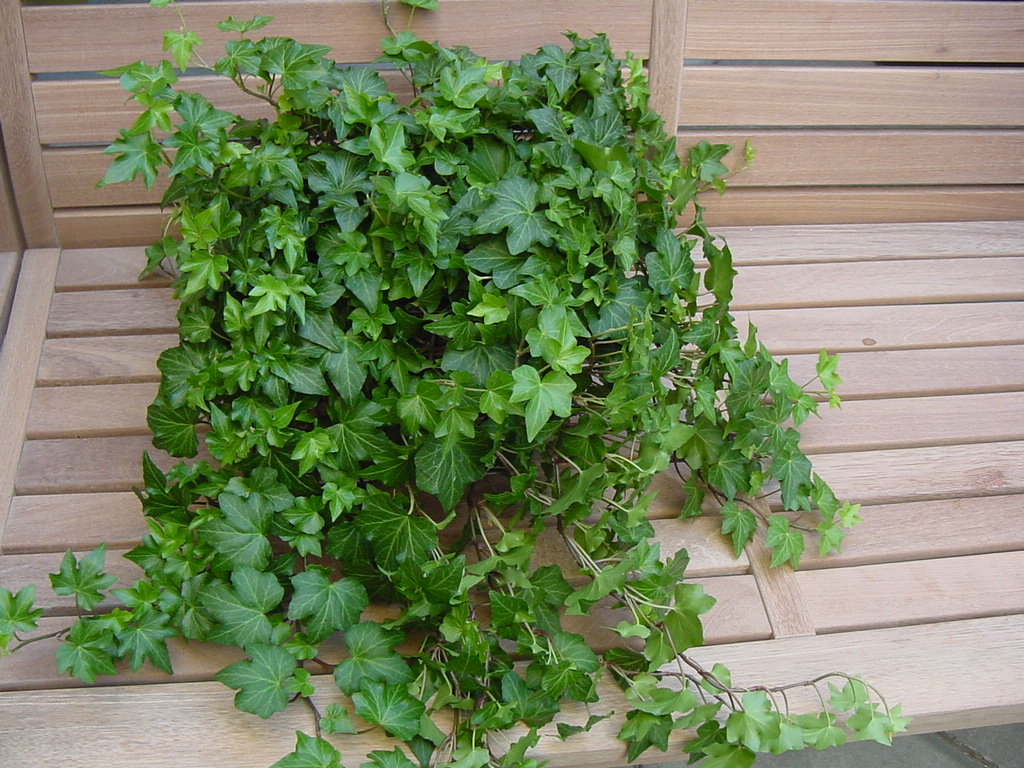
Hedera helix or English Ivy
10. Bamboo palms, Chamaedorea seifritzi and other palms are tops for removing the worst three household toxins—benzene, formaldehyde and TCE, They also pump much needed moisture into the air, especially during the cool months when heating systems dry the air. They require bright, filtered light, and allow the top of the soil to dry out before watering.
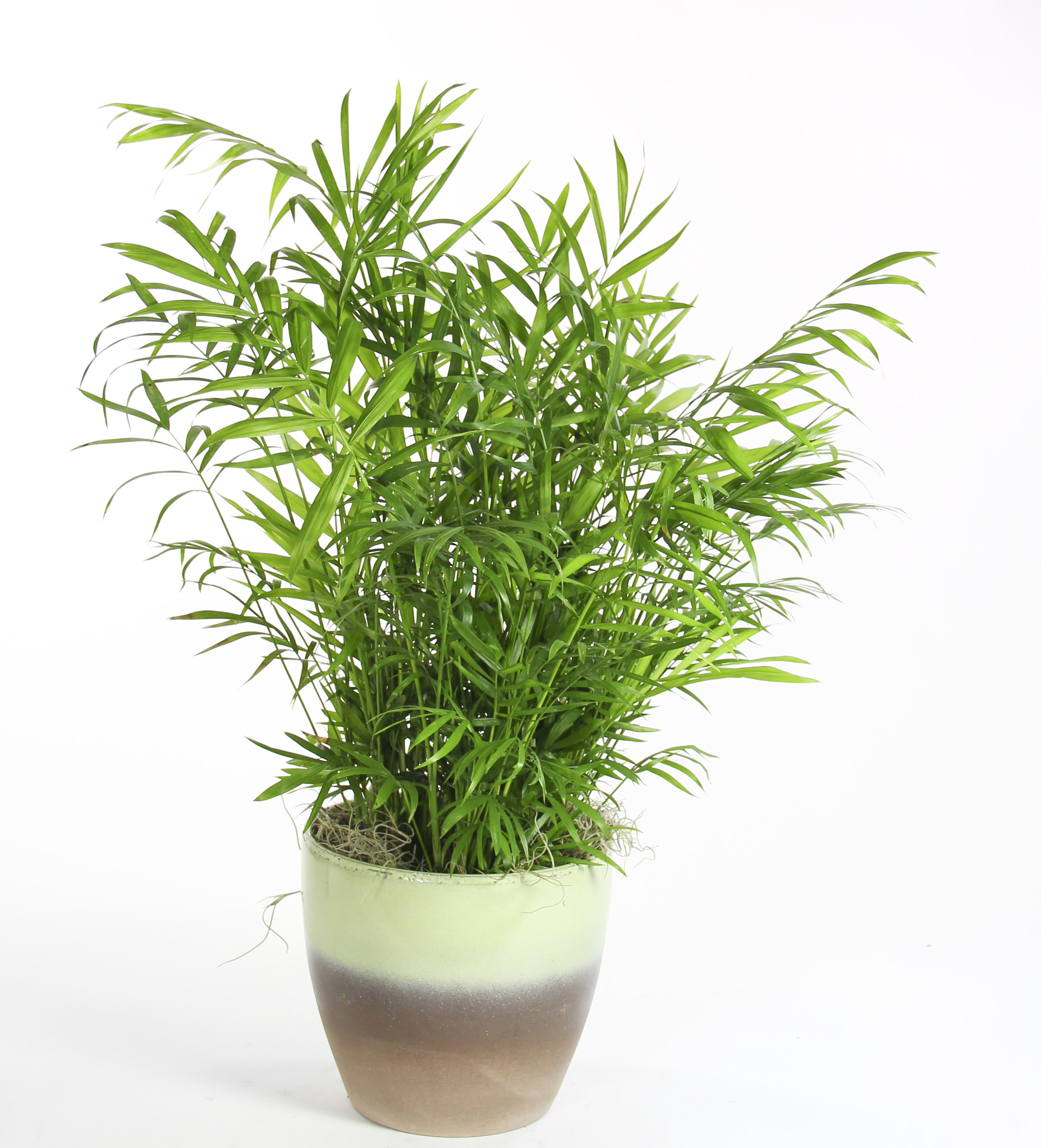
Chamaedorea seifritzi or Bamboo Palm
11. Philodendron, many var., removes formaldehyde fumes often found in new rugs and carpets. Keep in medium bright light, and allow the soil to become slightly dry between waterings. Give it a shower from time to time to keep the leaves clean.

Philodendron
12. Spider plants, Chlorphytum var., removes formaldehyde and xylene fumes often found in new rugs and carpets. Super easy plant. Prefers bright light, with some direct sunlight especially in the winter. Keep them out of hot midday sun, which may scorch the leaves. Water plentifully in active growth, keep moist. In the rest period allow the top inch or so to dry out between waterings.
13. Chinese evergreen, Aglaonema var., eliminates benzene, carbon monoxide, formaldehyde, TCE and more. Water moderately and allow soil to almost dry out before re-watering.
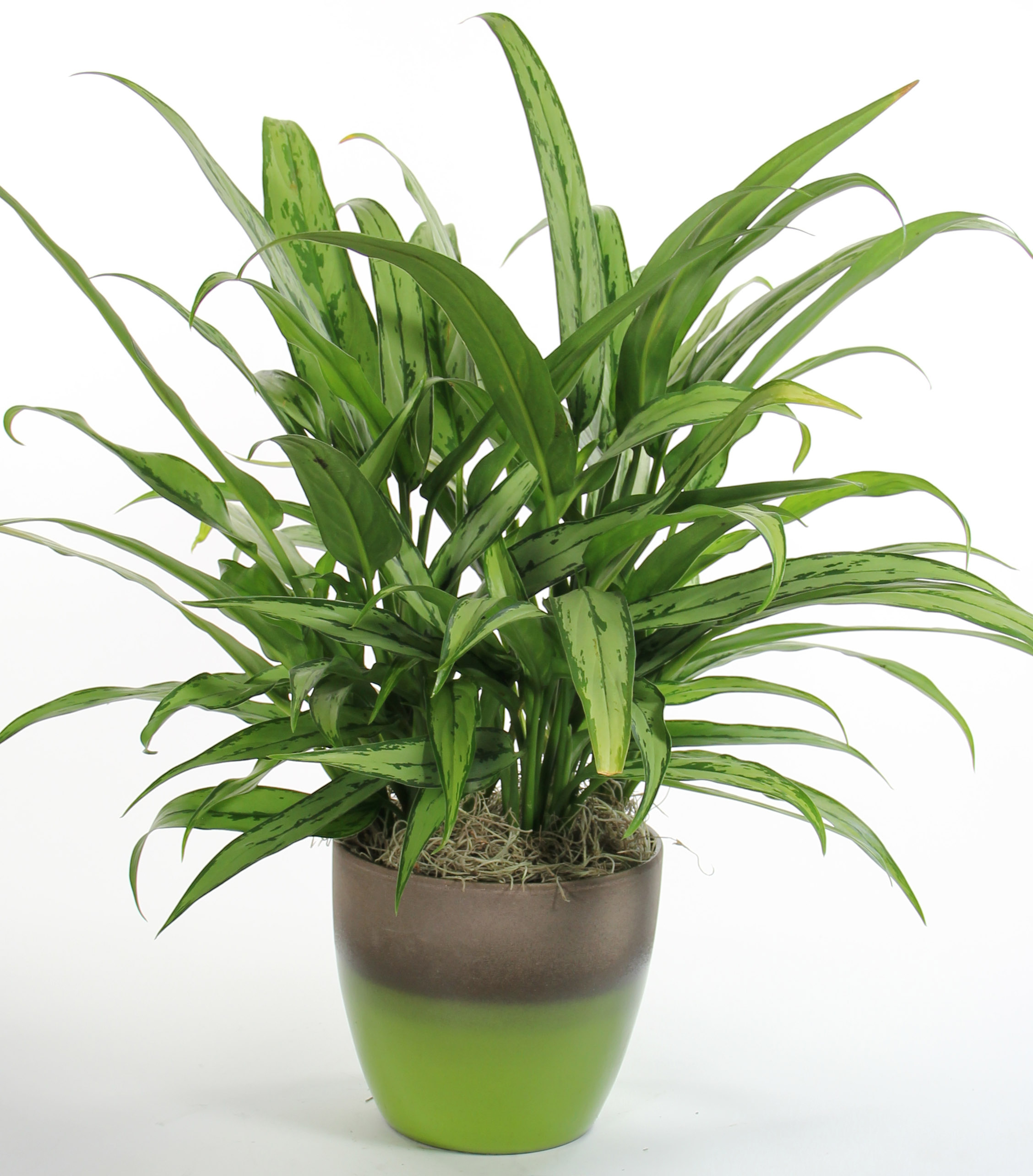
Aglaonema or Chinese Evergreen
14. Flamingo lily, Anthurium andraeanum, eliminates formaldehyde, xylene, and ammonia. This beautiful blooming plant prefers medium light, such as a slightly shaded window and plenty of moisture.
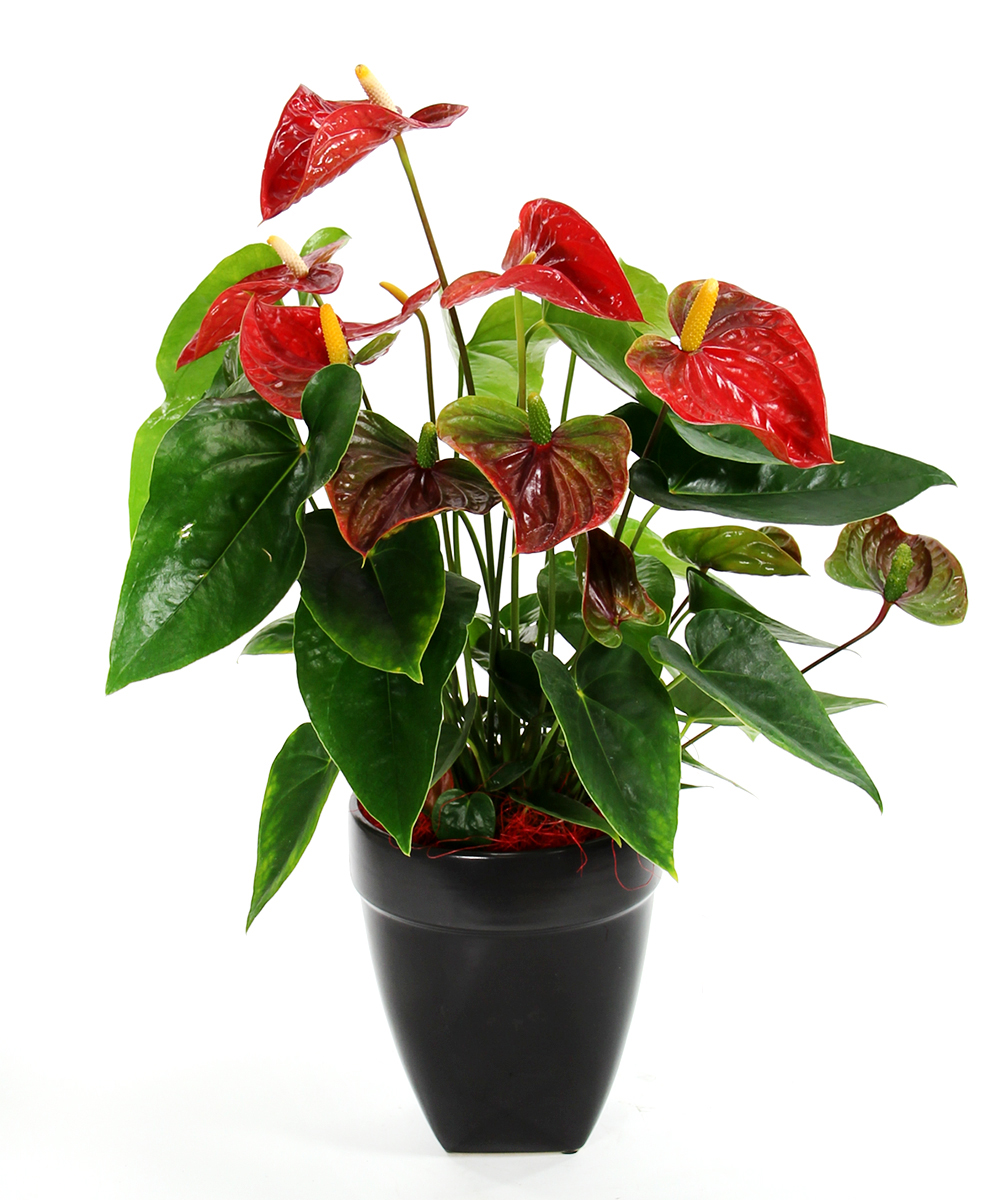
Anthurium
15. Chrysanthemums or Florist Mums, are ranked the highest for air purification. They’re shown to eliminate common toxins, such as formaldehyde, xylene, benzene and ammonia. Easy care. Check the soil’s moisture every other day, and keep damp. Treat yourself to a fresh pot every six weeks!
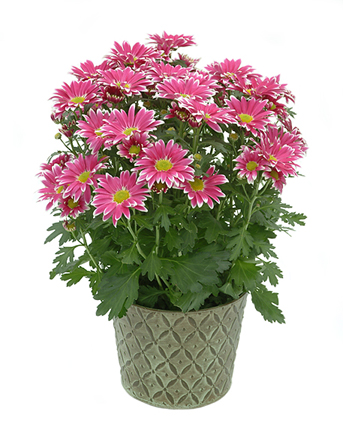
Chrysanthemum
All plants require regular fertilization during the active growth period between February and October.


